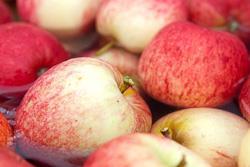
A draft sequence of the domestic apple genome has been published by an international team of scientists in the current issue of the journal Nature Genetics.
The team, made up of scientists from Italy, France, New Zealand, Belgium and the US, sequenced the more than 600m base pairs of DNA that make up the apple genome, according to Plant & Food Research, one of the groups involved in the research.
The new data is expected to help breeders select favourable attributes in apple varieties more accurately.
“Understanding how important characteristics in plants are controlled is vital in reducing the time to breed successful commercial cultivars,” said Dr Roger Hellens, Genomics Science group leader at Plant & Food Research.
“Now we have the sequence of the apple genome, we will be able to identify the genes which control the characters that our sensory scientists have identified as most desired by consumers – crispness, juiciness and flavour.”
But one of the most interesting results of the sequencing was the discovery that large portions of apple chromosomes have been duplicated in other chromosomes, pointing to a catastrophic event that put apples under great genetic strain.
Apples and closely-related pears – members of the Rosaceae family – have 17 chromosomes per genome, while Rosaceae plants have only seven or nine.
The researchers tracked the change, what they term a ‘whole genome duplication’ (WGD), to around 60m years ago.
“It seems that at some point, around 50-65m years ago, the apple ancestor separated from its Rosaceae cousins on the evolutionary pathway,” explained Plant & Food Research scientist Dr Sue Gardiner.
“By duplicating almost all of its genome, apples now have very different fruit characteristics to related plants, such as peaches, raspberries, and strawberries.
“The timeframe for this evolutionary change coincides with similar events in other plants and mass extinctions of some species, including the dinosaurs. This suggests that a major environmental event forced certain species, including `the` apple, to evolve for survival.”
In more immediate terms, the research will be used in apple breeding programmes such as Plant & Food Research’s own, and will enable agronomists to speed up selection of traits such as flavour, drought tolerance and disease resistance.



